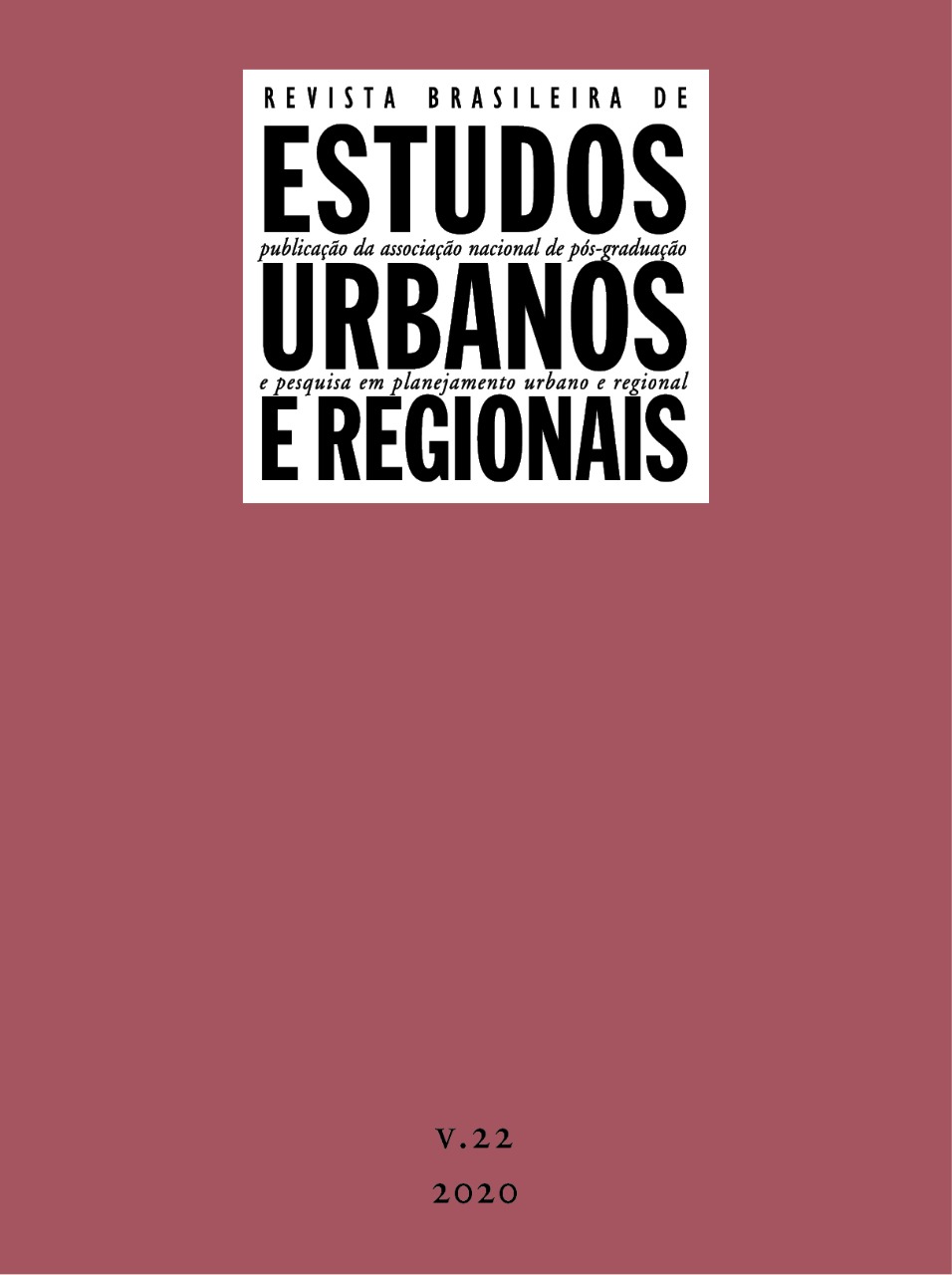Shanghai urban agglomeration and the spatial structure transformations of its central area: decline and renovation
DOI:
https://doi.org/10.22296/2317-1529.RBEUR.202002Keywords:
Shanghai, land use, planning, urban development, urban structureAbstract
The aim of this paper is to examine the spatial structure of the city of Shanghai, located in the People’s Republic of China, highlighting the evolution of the land use change in the center of the agglomeration, starting from the economic reforms. We will see that the change in political economy, brought about by the introduction of market mechanisms, had three main effects both direct and reciprocal on the urban fabric: decentralization, expansion and remodeling the urban structures. By doing so, we will try to elaborate arguments that support the idea that its new economic level, made possible by planning decisions and resulted in the economic reforms of the late 1980s, brought significant changes to the political economy of urban development. As a result, the changes have determined the process of accelerated substitution of land uses, with the radical recovering of existing structures for new uses of capital.
Downloads
References
CAMPANELLA, Thomas J. The concrete dragon: China's urban revolution and what it means for the world. Chronicle Books, 2012.
He, J. (2012). Implementation of the Shanghai Master Plan (1999-2020). In: Association of European Schools of Planning 26th Annual Congress, Ankara, Turkey, 11-15 July 2012.
Li, Ling-hin. (1999). Urban Land Reform in China. Macmillan Press, Londres.
Li, Z.; Wu, F. (2006). Socioeconomic transformations in Shanghai (1990–2000): Policy impacts in global–national–local contexts. Cities, 23(4), 250-268.
Lu, H (1999) Beyond the Neon Lights: Everyday Shanghai in the Early Twentieth Century. University of California Press, Berkeley.
Ma, Bing (2002). New Urbanism and Urban Development in Contemporary China. Tese de Doutorado. Carleton University.
Peterson, George E. Land leasing and land sale as an infrastructure-financing option. The World Bank, 2006.
Qin, B.; Zhang, Y. (2014). Note on urbanization in China: Urban definitions and census data. China Economic Review, 30, 495-502.
Science Press
Sha, Y.; Wu, J.; Ji, Y.; Chan, S. L. T.; Lim, W. Q. (2014). Shanghai Urbanism at the Medium Scale. Springer.
SPENCE, Jonathan D. The search for modern China. WW Norton & Company, 1990.
Wang, M. Y.; Kee, P.; Gao, J. (2014). Transforming Chinese Cities (Vol. 116). Routledge.
Wang, Yuwei (2012). The Chinese Unit. Persistence of the Collective Urban Model in Beijing. Architectural Association Graduate School, Projectives Cities AA.
Wu, F.; Xu, J.; Yeh, A. G. O. (2006). Urban development in post-reform China: state, market, and space. Routledge.
Wu, F.; Yeh, A. G. O. (1999). Urban spatial structure in a transitional economy: the case of Guangzhou, China. Journal of the American Planning Association, 65(4), 377-394.
Wu, W. (1999). City profile: Shanghai. Cities, 16(3), 207-216.
Wu, W. (2005). Migrant settlement and spatial transformation in urban China: the case of Shanghai. In World Bank Third Urban Research Symposium, 4th-6th April.
Yearbook, China Statistical. National Bureau of statistics of China. China Statistical Yearbook, 2012.
Yeh, A. G. O.; Wu, F. (1999). The transformation of the urban planning system in China from a centrally-planned to transitional economy. Progress in planning, 51(3), 167-252.
Yusuf, S; Wu, W (2002) Pathway to a world city: Shanghai rising in an era of globalisation. Urban Studies 39(7), 1213–1240.
Zhang, L.Y. (2003). Economic development in Shanghai and the role of the state. Urban Studies 40(8):
Zhang, M. (2008). From public to private: The newly enacted Chinese property law and the protection of property rights in China. Berkeley Business Law Journal, 5.
Zheng, Z.; Bohong, Z. (2012). Study on spatial structure of Yangtze River Delta urban agglomeration and its effects on urban and rural regions. Journal of Urban Planning and Development, 138(1), 78-89.
Zhu, L.; Qian, Z. (2003) The case of Shanghai, China. Global Report on Human Settlements.
Downloads
Published
How to Cite
Issue
Section
Categories
License
Copyright (c) 2019 Revista Brasileira de Estudos Urbanos e Regionais

This work is licensed under a Creative Commons Attribution 4.0 International License.
Authors who publish in this journal agree to the following terms:
1) Authors who publish in RBEUR retain the rights to their work and assign to the journal the right to first publication, performed under the Creative Commons Attribution License that allows work to be shared and assures the recognition of authorship and of the original publication vehicle, to RBEUR.
2) Authors are free to assume additional contracts separately, for publication and non-exclusive distribution of the version of the work published in this journal (e.g., publishing in an institutional repository or as a book chapter), reaffirming the authorship and recognition of the original publication vehicle, to RBEUR.











.png)

